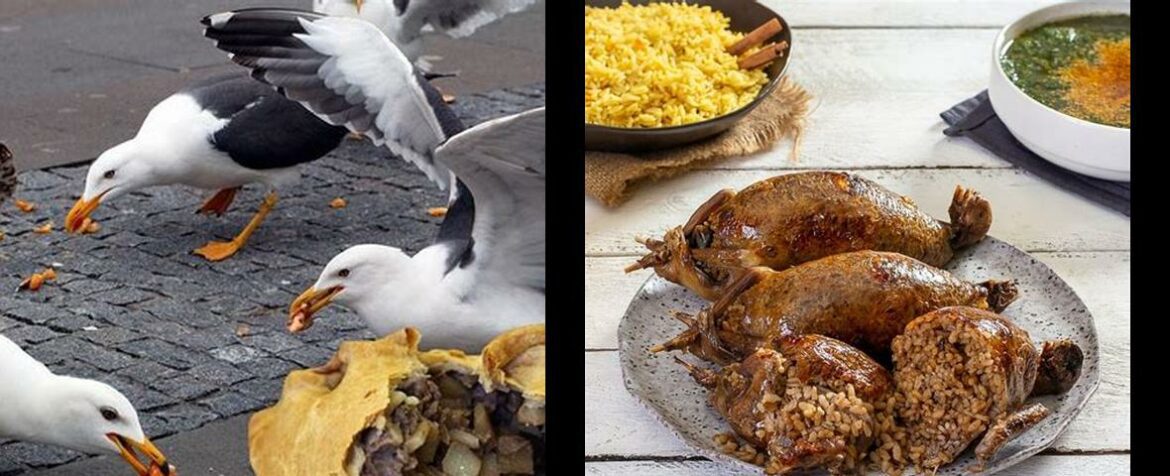Can you eat seagulls: Have you ever wondered if seagulls could be a potential delicacy? Well, hold on to your taste buds because we’re about to embark on a culinary adventure like no other! In this blog post, we’re diving headfirst into the intriguing realm of seagull consumption, exploring the edible attributes and preparation techniques that might just leave you gobsmacked. So, fasten your seatbelts and get ready to unravel the mysteries of whether or not you can eat seagulls.
Delving into the Culinary Realm of Seagull Consumption: Unveiling the Edible Attributes and Preparation Techniques
Seagulls, often perceived as ubiquitous coastal companions, possess a hidden culinary potential that has intrigued adventurous eaters for centuries. While not a mainstream delicacy, seagulls offer a unique gastronomic experience, boasting a distinctive flavor and nutritional profile. Embark on a culinary journey as we explore the edibility of seagulls, unraveling the taste, texture, and health implications associated with consuming these feathered creatures.
1. Unveiling the Taste and Texture of Seagull Meat: A Culinary Exploration
Seagulls, belonging to the avian family, possess edible flesh that bears a striking resemblance to chicken in terms of flavor and texture. However, their unique habitat imparts a distinct fishy scent and taste, adding an intriguing dimension to the culinary experience. The texture of seagull meat is often described as oily, rubbery, and gritty, posing a challenge for some palates. Nonetheless, with careful preparation and cooking techniques, seagull meat can transform into a palatable and enjoyable delicacy.
2. Navigating the Nutritional Landscape of Seagull Meat: Unveiling Health Benefits and Potential Risks
Seagulls, as a source of sustenance, offer a commendable protein content while remaining low in cholesterol and fat. This nutritional profile aligns with the dietary needs of health-conscious individuals. However, it is crucial to acknowledge the potential risks associated with consuming seagulls. These birds can harbor contaminants and illnesses, including E. Coli, posing a health hazard if not properly cleaned and cooked. Consuming seagulls raw is strongly discouraged due to the elevated risk of food poisoning from bacteria like salmonella.
3. Culinary Techniques: Transforming Seagulls into a Palatable Delicacy
To harness the culinary potential of seagulls, a variety of cooking methods can be employed, each imparting a unique flavor and texture to the meat. Grilling, baking, roasting, and steaming are popular techniques that yield succulent and flavorful seagull dishes. Soaking the meat in warm salt water for an extended period, exceeding 8 hours, effectively removes the fishy flavor, catering to those who prefer a milder taste. Vegetables often accompany seagull meat as a side dish, complementing its distinct flavor profile.
4. Grilling Seagulls: Mastering the Art of Heat and Patience
Grilling seagulls requires meticulous attention to prevent overcooking and burning the skin. Patience is key to achieving perfectly grilled seagull meat. Maintaining a moderate heat level ensures even cooking throughout, while basting the meat with a flavorful marinade or sauce enhances its taste and prevents dryness. Searing the seagull meat over high heat initially creates a crispy outer layer, locking in the juices and intensifying the flavor.
5. Unveiling the Seagull’s Culinary Potential: A Journey Through Culinary History and Modern Gastronomy
Seagulls, despite their unconventional culinary status, have garnered increasing attention as a potential meat source. Their unique flavor and texture, coupled with their nutritional value, have piqued the interest of adventurous chefs and food enthusiasts alike. While seagull meat possesses a gamey, chicken-like, or fishy flavor, thorough cleaning and preparation techniques mitigate any potential drawbacks, transforming seagulls into a delectable delicacy.
6. Embracing Safe Consumption Practices: Minimizing Health Risks Associated with Seagull Consumption
To ensure a safe and enjoyable seagull-eating experience, meticulous cleaning and preparation are paramount. Thoroughly removing feathers, entrails, and any visible contaminants is essential. Cooking seagulls to an internal temperature of 165 degrees Fahrenheit effectively eliminates harmful bacteria, minimizing the risk of foodborne illnesses. Additionally, sourcing seagulls from reputable and regulated sources helps ensure the birds are healthy and free from contaminants.
As you embark on your culinary adventure with seagulls, remember that this unique dining experience requires an open mind and a willingness to explore uncharted culinary territories. With careful preparation and cooking techniques, seagulls can transform into a palatable and intriguing delicacy, offering a taste of the wild that is sure to leave a lasting impression.
FAQ about Eating Seagulls
Q: Can seagulls be eaten?
A: Yes, with careful preparation and cooking techniques, seagulls can be transformed into a palatable and enjoyable delicacy.
Q: What is the nutritional profile of seagulls?
A: Seagulls offer a commendable protein content while remaining low in cholesterol and fat, making them suitable for health-conscious individuals.
Q: Are there any risks associated with consuming seagulls?
A: Yes, seagulls can harbor contaminants and illnesses, including E. Coli. It is crucial to properly clean and cook seagulls to minimize the health hazards.
Q: Can seagulls be eaten raw?
A: No, consuming seagulls raw is strongly discouraged due to the elevated risk of contamination and illness. They should be thoroughly cooked before consumption.
Q: What does seagull meat taste like?
A: Seagull meat offers a distinctive flavor, providing a unique gastronomic experience for adventurous eaters.
Q: Is eating seagulls a mainstream delicacy?
A: No, eating seagulls is not a mainstream delicacy. However, it has intrigued adventurous eaters for centuries, offering a taste of the wild and an opportunity to explore uncharted culinary territories.


